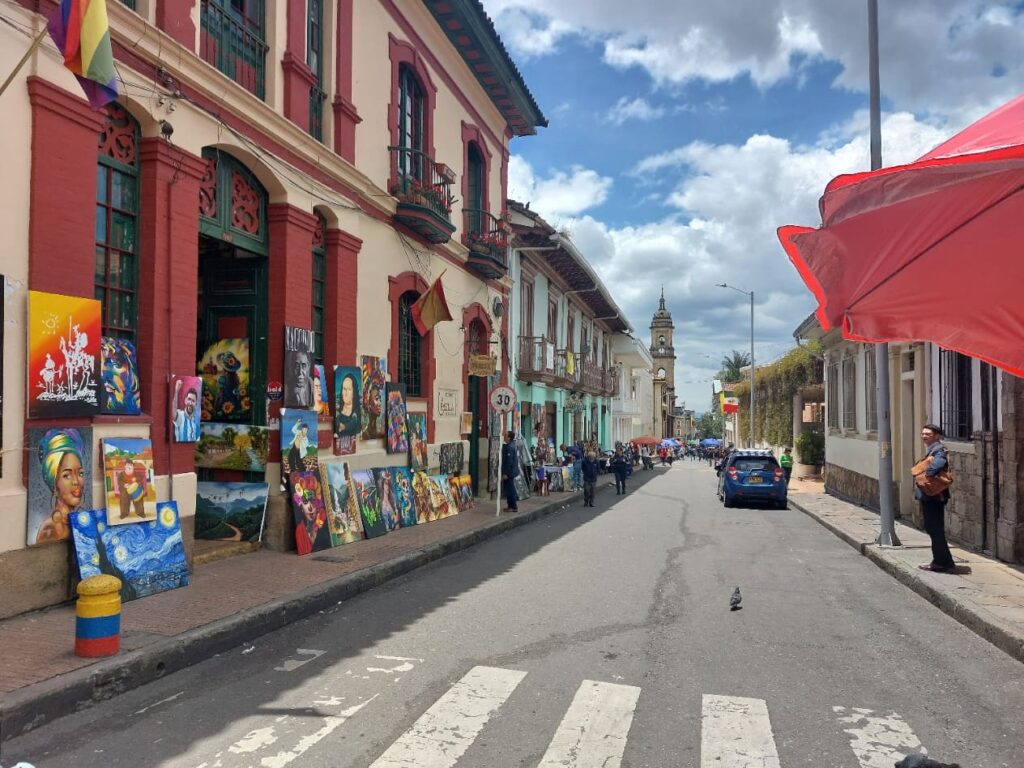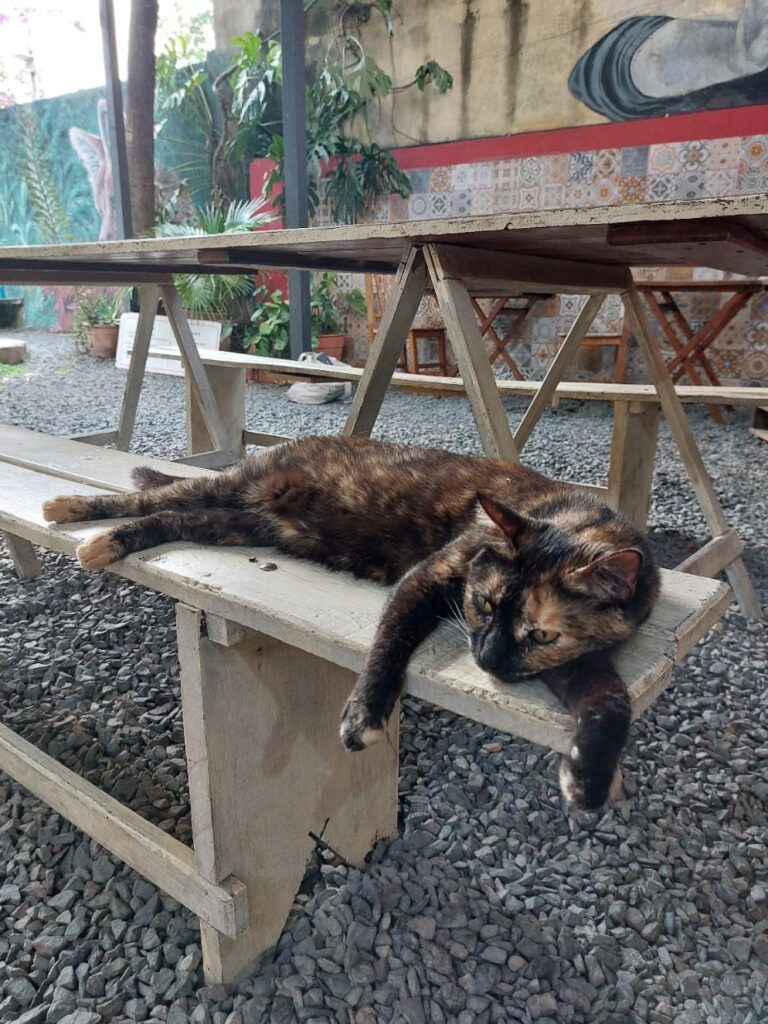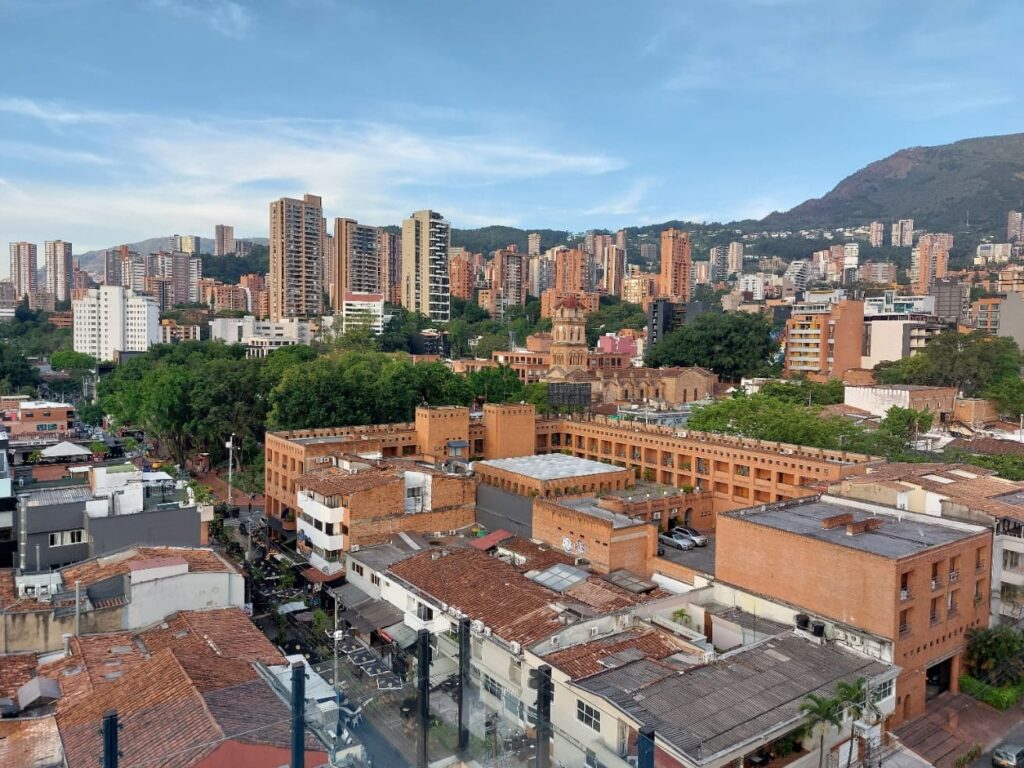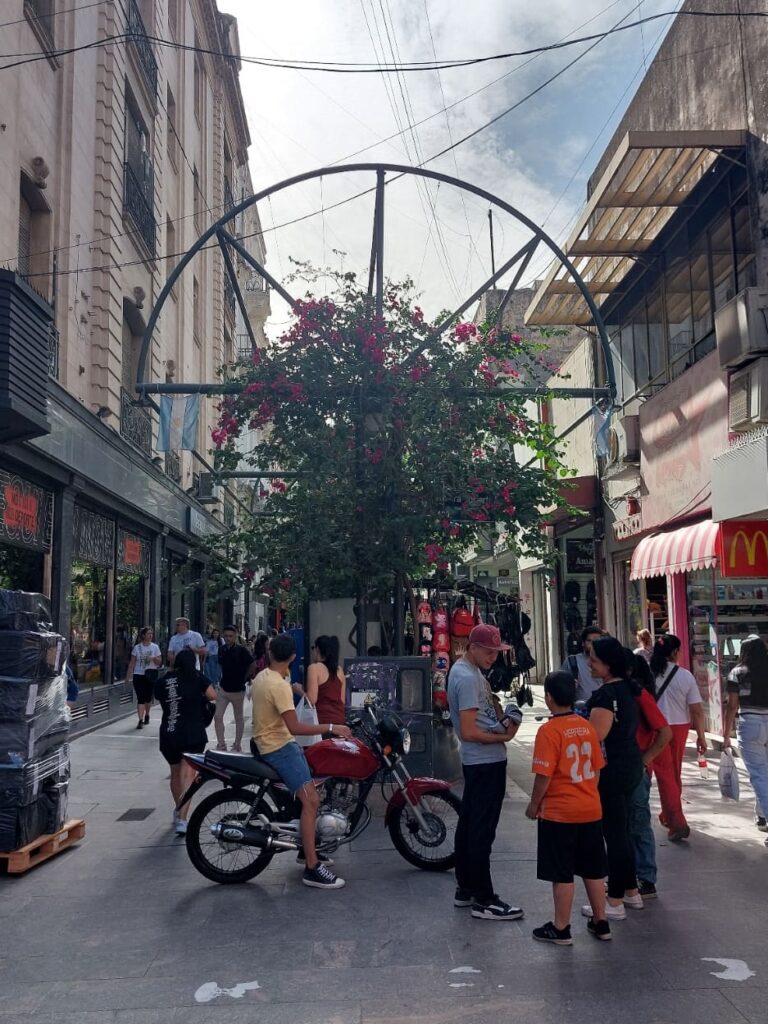Latin America is the land of magical realism, salsa, romantic encounters, magnificent carnivals, stunning nature and most importantly, kind, welcoming people.
Much has been written about this unique place. Many of us are curious to know whether the typical stereotypes are true. Are Latin Americans incurable romantics? Is everyone in Latin America hot-headed?
During my year-long trip through Central and South America, I had time to observe and take notes of some of the most common misconceptions the rest of the world has about Latin America.
That’s how I came up with “Truths and Myths about Latin America: Here’s Some Helpful Advice”. This is a collection of observations based on my experience of living in several countries in Central and South America for 1 year.
The purpose of this blog post is to be a useful guide for everyone interested in truths and myths about Latin America. Were they still the same in 2023? If not, how much has changed? Let’s find out.
Truths and Myths about Latin America: Here’s Some Helpful Advice
When I started travelling through Central and South America, so many of my friends asked why go to countries like Colombia or Brazil. Didn’t I know how dangerous it is there?
I received this kind of advice from people who never went to either Brazil or Colombia but knew people who told them not to visit these countries. They were usually expats from those countries now living in Europe.
I was surprised to hear that Colombians and Brazilians would say something like this, so I decided to ignore all the warnings and go for it. It’s been my lifetime dream to slow-travel and get to know the different nations forming Latin America and I was not gonna put this off any longer.
Here I am with a summary of what I’ve come across at the end of this 1 year of travels through Central and South America.
Before I start, I would like to clarify some of the terms I’m using in this blog post.
When I refer to Latin America I mean all Spanish-speaking countries located in North, Central and South America, including some of the islands located in the Caribbean Sea like Cuba, Puerto Rico, and the Dominican Republic. I will name Brazil separately if I make references to this country too.
When I refer to South America it is from a geographical point of view than a cultural one (as is the case with the term Latin America). Therefore, South America also includes Brazil and other countries which are not necessarily Spanish-speaking countries but are located in South America (like Guyana, Suriname etc).
Truths and Myths about Latin American Weather

When we think of Latin America we often imagine the perfect tropical weather where every day is a beach day. This cannot be further from the truth.
Latin America is a huge territory, and as a consequence, it encompasses several types of climates. The south of Argentina and Chile can get very cold, while Brazil tends to have tropical weather. Nevertheless, there is cold weather in several regions in Colombia as well as in Peru.
The temperature in the northern part of Colombia can drop to a one-figure digit, while the south of Argentina sees snow quite frequently. Therefore, don’t get fooled; if you plan on backpacking this side of the world, you better pack some winter clothes too.
You might also think that it barely ever rains here. In fact, countries in Latin America have a wet season during which surprisingly rains quite a lot. I travelled to Costa Rica and Panama during their wet season and it rained every other day. Overall, it felt like it rained more than in the UK, which is notoriously known for its wet weather.
So yeah Latin America is not exactly the land of the eternal summer.
Latin Americans can cope with the rain better than expected
Something that surprised me was how well people deal with the rain here. I would say people in Latin America deal with rain much better than the UK does, to be honest.
Obviously, it’s one thing to be rained on when it’s 30 degrees Celsius and it’s different when you get wet in the UK at 15 degrees Celsius (or even less). But still, I was surprised at how relaxed everyone was and carried on with their day even during and after a torrential rain.
Also, it was funny to notice that like in the UK, an umbrella won’t do much for you when it rains. People would stop and wait for the rain to stop before continuing with their work.
Latin Americans are hot-headed
Before travelling to Latin America, I also thought people in Latin America were quite hot-headed. Now I know that Mexican soap operas were a bit exaggerated.
I was surprised to discover that Latin Americans are quite laid back. I particularly enjoyed the life outlook some of them have. The less you plan and stress out, the happier you become. Coming from a background where almost every job interview asks where you see yourself in 5 years, this was quite a useful lesson to learn.
Stop overthinking, you can always plan for so long in advance. Embrace the unknown and enjoy more the moment. These are some of the things I learned by chatting with people across Latin America.
Latin Americans are not on time
This is one of those truths I got to test out. Coming from Europe it was quite a cultural shock to have travel tours starting half an hour later. And don’t have anyone apologizing for the delay or sending you any notice about it. Like being late is customary here. In my experience, starting travel tours late was more of an occurrence in Costa Rica than everywhere else. But still, people here are not on time the same way I was used in Europe.
So after a while, you get used to it. There isn’t really a way around it if you want to survive in Latin America.
Latin Americans are loud
Generally speaking, everyone here speaks louder and they might seem that they argue, when in fact, they are discussing ordinary matters like family, politics etc.
Yet, I have to say that depending on which country you are in, you will perceive the louder part differently. For me, the Colombian and Venezuelan accents are somehow softer and they don’t come across as way too loud.
Yet, I tend to perceive Mexicans as being louder. I believe it’s all about perception here and how used are you to people around you talking loudly.
Latin America is chaotic
I would say Latin America is less chaotic than other places out there. Nevertheless, Latin America can be crowded and loud, but I believe it is manageable. It depends on how well you can cope with big, crowded cities and heavy traffic.
Rural areas can be a bit quieter, although if it is a tourist area, don’t expect too much tranquillity.
Brazilians have a thing for queues
Building on my previous idea, I loved how Brazilians queued for everything. This is something you don’t see often in Latin America (I guess that’s where the whole myth about chaos began). But Brazil is different when it comes to queuing. This so reminded me of the UK.
Siesta is a real thing

Similar to the Spanish siesta, Latin Americans also enjoy their afternoon nap. You won’t find many people out during the siesta time (it usually starts after midday and it lasts up until 4 pm). Big supermarkets are always open as other main services like trains, bigger restaurants etc. But small businesses might as well close, so you will definitely feel the city less crowded during the siesta hours.
Latin Americans love football
Indeed, Latin Americans love football. The better the football team is, the greater the support is. Going to a football match is such an event in Latin America, it is even suggested as part of tourist activities in countries like Colombia, Brazil, and Argentina.
So far, I believe Argentinians are the best supporters of their national team. It is common to see guys wearing football T-shirts on the street to show their support for the football national team.

Perhaps I should also mention all the Messi statues and saint-like pictures of Messi I saw in Argentina and Colombia. Indeed, football here is serious business and better don’t make jokes about it. People here are very supportive of their football teams, so you don’t want to offend anyone.
Latin Americans are romantic
They surely are. I mean all those soap operas must have been inspired by some real-life events too, isn’t it?
While in Latin America, you might end up witnessing what I witnessed in Mexico. A guy hired a mariachi band and dedicated a serenade to his lover.
The band played outside until the girl heard them and came outside the house, listening to the entire repertoire from her balcony.
Just like in Romeo and Juliette, the lovers kissed at the end while a bunch of strangers were applauding them (I was amongst them too). Below is a snapshot of the entire moment.
So judging by my experience in Mexico, you can tell that Latin Americans can be quite romantic.
Latin America is a poor region
Latin America is wrongly perceived as being a poor region. I would say there is a higher discrepancy between the poor and the rich, but I did not consider Latin America to be that poor.
I was surprised to see how many roads, bridges, and skyscrapers are being built across the continent. From Mexico to Colombia and Brazil, infrastructure is something local governments invest in massively. In terms of infrastructure, I would dare to compare some countries in Latin America with Eastern Europe and the Balkans.
In my opinion, this is a sign of prosperity rather than poverty. As this article points out, not everyone is struggling to leave the hood.
It is challenging to travel through Latin America as a solo female traveller
I travelled through Latin America for 1 year by myself and I cannot agree with this statement. Perhaps, Latin America is not exactly the place to travel to by yourself as a beginner traveller. But there are places out there which are far more challenging for solo female travellers than Latin America.
People living in developing countries are unhappy
We tend to think that people living in developing countries are somehow not as happy as the ones who live in developed countries. This is false!
Latin Americans are the most joyful, happy people I ever came across. I was surprised to see how happy and in a good mood everyone was here. Everyone is so polite and eager to help, and genuinely interested in where you come from and how your experience in the country has been so far.
Latin Americans are by far some of the most welcoming and happy people I’ve met so far.
Truths and myths about Latin American food
We often sum up the Latin American food to tacos and empanadas. Yet, tacos are specific to Mexico. While empanadas are your typical food on the go and are popular across Latin America, there are other foods this region should be known for.
The best things I’ve eaten in Latin America were exotic fruits (papaya, dragon fruit, pineapple, mango etc). They taste nothing like the ones exported to Europe. Acovado also tastes differently here and they are much bigger.

Yet, I’ve noticed that other foods are highly processed compared to Europe. It is more common here to add sugar to pretty much everything. It was very hard for me to find some clean bread or yoghurt.
More fizzy drinks instead of water
Something I found so wrong here is that fizzy drinks are often more accessible than water. I remember that in Colombia, supermarkets used to have more cold, fizzy drinks than water. I found this to be the best marketing strategy to make people drink sugary drinks instead of just plain water. Because who would drink lukewarm water when outside is well over 40 degrees Celsius? Most of us would go for a cold drink.
Read the label
Even what’s labelled as healthy tends to be well, not that healthy if you read the label. You would look for a healthier plant-based milk option, but the label would still list some weird ingredients which sounded anything but healthy to me.
In conclusion, while Latin America has a great variety of fresh produce, you need to be careful because the amount of sugar that’s added here to pretty much everything is higher than in Europe, for example.
It is challenging to be a vegetarian/vegan travelling in Latin America
I would say it is more challenging for vegans than vegetarians to travel to Latin America. This part of the world surely has a love affair with meat. Every country here adds meat or fish to every dish. And when it is not meat or fish it is some sort of dairy product. Colombia even adds cheese to hot chocolate. And Argentina would never serve you a dish without meat.
The best way to eat less meat is either to choose fish, there is always a fish option on the menu or prepare your food. Another option would be to only eat vegetables but I guess you will need some variations after a while.

I did have breaks when I did not eat meat simply because Latin Americans eat meat way too much here. Yet, I kept the cheese and added protein-based products (you can find protein bars and protein drinks quite easily).
All in all, I found dishes across Latin America to be very much meat-based. You will find vegetarian options, but they can be slightly limited depending on the country you are based in. There are much less options if you are lactose intolerant and vegan.
There are double standards when it comes to certain products
Unfortunately, this is true. I remember being so hard to find aluminium-free products. It took me weeks until I found such a product. It was definitely harder to get access to these types of products in Latin America than it was back home where I had more variety.
Latin America is low-budget friendly
Latin America is not exactly cheap. It is cheaper than Europe but sometimes not as much as I would have expected.
Don’t assume Latin America is the perfect travel destination for low-budget travellers because sometimes it can end up being quite expensive.
I travelled to most of South and a few Central American countries, including Mexico.
By far, the most expensive countries in Latin America have been Costa Rica, Panama and Uruguay. These countries can be as expensive as Western Europe. Costa Rica had similar prices to Germany.
I also found Brazil to be similar to Eastern Europe. While Colombia remains one of the most affordable countries in Latin America to travel to, there are other affordable options out there like the less-known Paraguay and Mexico.
In conclusion, don’t assume everywhere in Latin America is cheap because this is not the case.
Latin America is dangerous
Yes, Latin America is dangerous. Surely more than Europe where I was born and lived my entire adult life. But not to the point where you don’t see people using their phones on the street. Or you don’t see people walking down the street at night. Obviously, you cannot do this everywhere, but normal life happens here the same way it happens in developed countries.

Something I noticed in big cities across Latin America is that the rough areas are usually located downtown. It was common in Medellin, Sao Paulo, and Bogota to have the city centre labelled as one of the most run-down and unsafe areas in the entire city. This is opposite to how things are in Europe where city centers are usually the nicest parts of a city.
Therefore, once you learn your way around it, Latin America suddenly stops being so dangerous.
I had the best travel experiences in countries with the worst reputation
I had my best travel experiences in countries that are considered one of the most dangerous in Latin America.
My preferred destinations have been Colombia and Barzil just because they proved to be the opposite of what everyone else told me they would be. Unsafe, dangerous and hard to travel to. I won’t pretend everything was perfect, but because the expectations were low, the result has been that Colombia and Brazil have been the countries where I had the best time.
Another pleasant surprise has been Paraguay. OK, it is not the most exciting country to visit on the continent, but it has an interesting culture, and laid-back people, which makes it the perfect stop if you’re looking for a quiet, affordable place in South America.

At the end of my travels through Central and Latin America, I learned that some stereotypes are true. Otherwise, how would you get people talking about it in the first place?
Still, beyond the stereotypical image the rest of the world has about Latin America, some truths deserve to be shared with the rest of the world. Like addressing the safety concerns everyone has before travelling to Latin America. Or the misconception about everything being so affordable here.
I hope this blog post becomes a good source of information for those interested in the truths and myths about Latin America.
I am curious, what other truths and myths about Latin America do you know or you would like to be discussed further in this blog post? Leave a comment down below, and I will try to answer it or find the answer for you.

